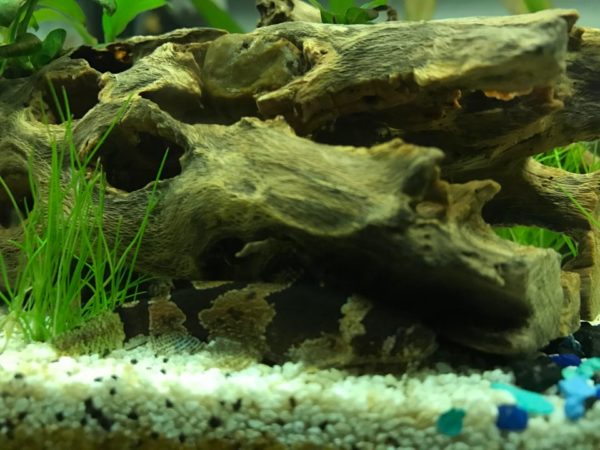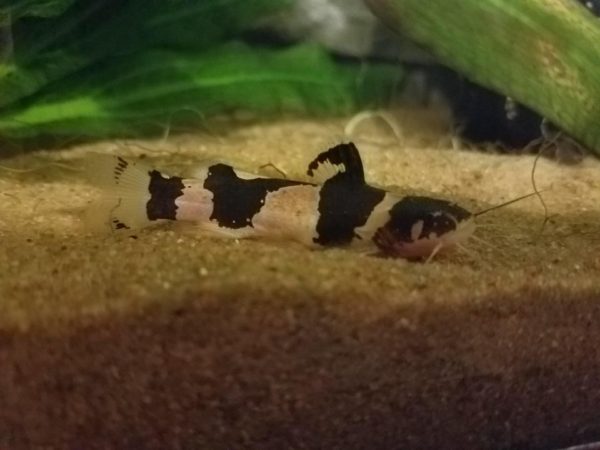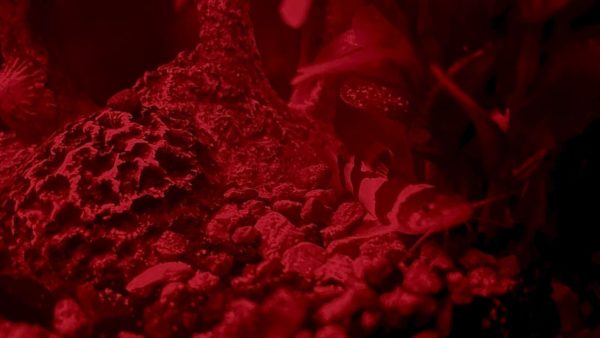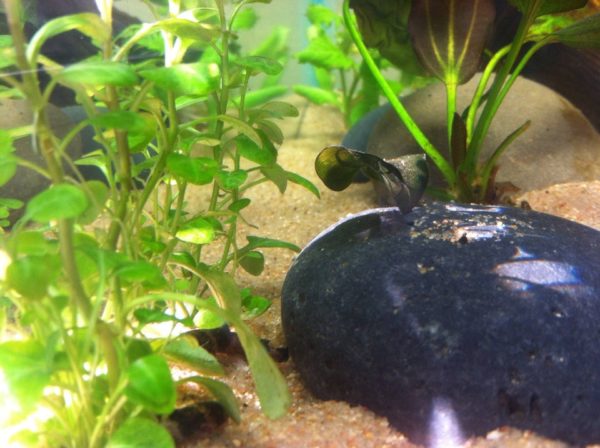Table of Contents
Bumblebee Catfish : A Summary
The bumblebee catfish is a small, colorful fish native to South America known for its black and yellow stripes and peaceful nature. It is easy to care for and thrives in a community tank setup with other fishes. It has a lifespan of up to 10 years.
Bumblebee Catfish Overview
Are you looking for a wonderful, bright addition to your aquarium? Look no further than the Bumblee Catfish! This fish is vibrant and comes in an array of colors. Just watching this aquatic creature is entertaining. It spends much of its life hidden in rock crevices. It only comes out to search for food every now and then.
The scientific name of the Bumblee Catfish is Microglanis Iheringi. The family is called ‘Pseudopimelodidae’. The genus is ‘Microglanis’.
| Information Chart | Bumblebee Catfish |
| Scientific Name: | Microglanis Iheringi |
| Family: | Pseudopimelodidae |
| Care Level: | Medium |
| Temperament: | Shy and mild-mannered |
| Color: | Black and Yellow Banding on Body |
| Lifespan: | Up to 5 years |
| Size: | 8 centimeters or 3.14 inches |
| Diet: | Frozen foods Daphnia and river shrimp Pellets and flakes Cooked foods like prawns, beef heart, cod, and mussels |
| Minimum Tank Size: | 20 Gallons |
| Temperature: | 70-77 Fahrenheit or 21-25 degrees Celsius |
| Water Conditions: | pH of 6.5 to 7.7 Hardness of 8-12 dHG |
| Tank Mate Compatibility | Gouramis Eels Barbs Iridescent sharks Plecos Loaches Rainbow sharks Tetras |
Bumblebee Catfish Appearance

Varieties of Bumblebee Catfish
Sometimes, this fish is confused with the Asian Bumblebee Catfish. This confusion is quite common. There are many similarities between the two varieties of fish. At first glance, they might even appear to be the same. But there are minute differences in their appearance that help in telling the two varieties apart.
To identify a Bumblebee Catfish, here are some features you need to look out for:
- The Bumblebee Catfish has black and yellow bands on its body. This gives it a broadly striped appearance.
- Similar to other species of catfish, this fish has skin on its body, instead of having scales.
- This fish has an elongated body. It also has a fork-like caudal fin.
- This species of Catfish has well-developed spines. It has a dorsal fin that stands out.
- The fish has a flattened head, along with well-marked lateral lines.
- It has cat-like barbels near its mouth. The mouth itself is wide. In some fishes, the barbels can even reach the spines and dorsal fin.
- The Bumblebee Catfish has an Adipose fin, placed slightly above the anal fin.
- The fish has a dark brown patch around the caudal peduncle.
- Average lengths of the Bumblee Catfish can go up to 8 centimeters or 3.14 inches.
- The fish can live up to 5 years if cared for properly.
Lifespan of Bumblebee Catfish
The typical lifespan of a Bumblebee Catfish is around 5 years. However, this happens only when the fish is cared for properly. It is a resilient and hardy fish otherwise. When cared for properly, this fish can live a happy and peaceful life in your tank.
Bumblebee Catfish Size
The typical Bumblebee Catfish grows up to 2 inches on the lower end and 3 inches for larger specimens. This is around 5 centimeters to 8 centimeters. Their length and size are based on the type of care you provide. It also depends on the environment the fish came from before it goes into your tank.
Natural Habitat and Origin
The Bumblebee Catfish is a South American and Asian species. Columbia, Venezuela, and Peru are among the countries where they live in the wild. This fish prefers fast-moving water with lots of boulders and gravel in the wild. If you want your Bumblebee Catfish to thrive in your tank, make sure you provide a similar environment.
Bumblebee Catfish Care and Tank Set-Up
Bumblebee Catfish Tank Size and Specifications

In this section, let’s look at the optimum tank size, care, and specifications. Taking proper care of this species is not a difficult task at all. It simply needs a few things to be just right, and you’ll have a happy swimmer in your tank!
Optimum Tank Size for Bumblebee Catfish
The recommended tank size for the Bumblebee Catfish is at least 20 gallons. This fish is a wide swimmer. It needs space to swim around and explore. A tank of 20 gallons at least is perfect for this fish. The Bumblebee Catfish also scavenges for its food. Hence, it will need a tank large enough to allow for some mobility and area to cover. If you want to add more of these adorable fishes to your tank, make sure you change the size accordingly. Ideally, add 10 gallons for every extra fish that you add to your tank. This ensures plenty of moving space for all the fish.
Tank Shape for Bumblebee Catfish
This fish has no qualms about the shape of the tank. The only real requirement it has is that the size should be comfortably large. Since this fish is a bottom dweller, it requires more area to cover. Square or rectangular tanks would be the perfect fit for the Bumblebee Catfish. Just ensure that the base is large enough for the fish to have lots of room to explore.
Filter Type
The Bumblee Catfish feeds well. However, if you leave in more food than necessary, it might lead to wastage. Make sure you have a good quality filter to clean up any excess food. Waste from the fish will tend to settle as well. The waste will need cleaning regularly. A good-quality filter should do just fine.
Substrate
The Bumblebee Catfish is a native of South America. It thrives in fast-flowing waters with plenty of rocks and gravel. Make sure you mimic these conditions. Since it is a bottom-dweller, it requires familiar terrain to truly enjoy itself. Add rocks and gravel to your substrate to make the fish feel right at home. However, since it is a bottom-dweller, the fish might disrupt any loose substrate. Ensure that all the substrate at the bottom is firmly placed in the tank. Avoid rocks that are too sharp. This might cut the underbelly of the fish, resulting in possible infections. The bottom arrangement of the tank must not be easily movable by the force of a small fish like the Bumblebee Catfish. Secure your substrate properly to create its native water conditions in your tank.
How Many Bumblebee Catfish in a 20 Gallon Tank?
As a rule of thumb, an adult Bumblebee Catfish requires around 20 Gallons of tank space to be comfortable. If you wish to add more, make sure your tank size changes accordingly. For every additional fish you add, increase the tank size by 10 gallons.
Water Parameters for Bumblebee Catfish
The original habitat of the Bumblebee Catfish is fairly tropical. This fish is quite hardy and can survive most water conditions. Make sure you change the water every week by 20-25 percent. This is one of the most crucial components of bumblebee catfish care, as it ensures that they are kept in a healthy environment. It will also minimize the risk of disease and illness significantly.
Because these fish are accustomed to fast-moving water, they will struggle in a freshwater tank that lacks it. To ensure that the water has enough oxygen for them to thrive, aim for a medium level of water flow.
To ensure the best conditions for it to thrive, there are some measures you must take. The most important is to
Water Temperature
The ideal water temperature for the Bumblebee Catfish is between 70 and 77 degrees Fahrenheit (21 and 25 degrees Celsius). Maintain this temperature at all times. This is an ideal condition to make this fish feel at home. When you are changing the water of your tank, do make sure that the new water is at the same temperature as the old. The continuity will make the fish feel safe and comfortable.
Water Flow Rate
The Bumblebee Catfish is used to tropical waters. It needs high-speed, fast-flowing water. This is its natural habitat. Make sure that the current in its tank is high enough to simulate such conditions. Being a bottom-dweller, the fish needs to feel the fast current even at that depth.
pH Levels
A water pH for Bumblebee Catfish is between 6.5 to 7.7. Keep the water fresh by changing it after every week or so. Although this fish can survive in most waters, keeping this balanced pH will promote healthy growth. A well-maintained pH also goes a long way in regulating the fish’s activity and increasing its lifespan.
Water Hardness
For the Bumblebee Catfish, it is important to maintain a water hardness of about 8-12 dHG. This level ensures a happy and healthy Bumblebee Catfish population in your tank!
Bumblebee Catfish Tank Landscape
If you want your Bumblebee Catfish to feel exactly at home, make sure you mimic its natural habitat. This fish is used to the tropical waters of South America. The flora in those waters makes the fish feel like it is in a familiar environment.

Best Plants for Bumblebee Catfish Tanks
The Bumblebee Catfish is used to healthy flora in its natural habitat. When you put them in tanks, make sure a similar environment is replicated. Add enough greenery for the fish to make it feel like it is in a natural setting. Some plants that you can add to a Bumblebee Catfish tank are:
Worst Plants for Bumblebee Catfish Tanks
We know that the Bumblebee Catfish is a bottom-dweller. It needs places to swim through and play around in terms of plant life. Make sure you don’t add too many floating plants or weeds. They can get in the way of the fish’s exploration. Avoid ground covering plants since they will obstruct the Bumblebee Catfish. The fish prefers rocks and gravel over plants at the bottom.
Decorations for Bumblebee Catfish Tanks
The Bumblebee Catfish loves roaming around at the bottom of the tank. It also loves hiding under nooks and crannies. To make your tank a hospitable place for the Bumblebee catfish, add lots of rocks to the tank. The fish will poke out of the rocks and swim in between them while exploring. Even if the tank is well-lit, the fish likes exploring under shadows and in the darkness. Placing large smooth rocks gives the fish plenty of hiding space.
Lighting for Bumblebee Catfish Tanks
At the bottom of a body of water, there isn’t much light penetrating. The Bumblebee Catfish is used to that. In a well-lit tank, the fish darts in and out of shadows. Your lighting should really be focused on the kind of plants you have in the tank. The fish can do with whatever lighting conditions you set up, as long as it’s not too bright.
Nitrogen/other nutrient requirements for Bumblebee Catfish tank?
Ammonia, nitrites, and nitrates should all be kept around 0 parts per million (ppm). Even though this catfish is tough, even low amounts of 5 ppm or less can damage the immune system. As a result, there is a higher chance of sickness for the fish.
Feeding Bumblebee Catfish
Best Food for Bumblebee Catfish
Because this fish is a carnivore, it eats insects and larvae. The bumblebee catfish, with its huge mouth, is prone to consume large food pellets. It cannot share a tank with lesser fish since it will eat them at night during its feeding period. Other food options include:
- Frozen foods
- Daphnia and river shrimp
- Pellets and flakes
- Cooked foods like prawns, beef heart, cod, and mussels
Bloodworms and earthworms are the favorite foods of most fish. The bumblebee catfish is in the same boat. Mosquito larvae are also present.
How often should you feed the Bumblebee Catfish?
This fish, like most others, can be fed three to five times per day. Although it spends much of the day hidden in rock crevices due to its bashful temperament, it bursts into action if it notices something delicious in the tank.
Despite the fact that it feeds effectively, you should exercise caution to avoid waste. When there isn’t enough food in the tank, the rest will be left there, requiring more frequent water changes than is necessary.
Bumblebee Catfish Behaviour and Temperament
Are Bumblebee Catfish lone or societal in nature?
These fish, like their namesake, are apprehensive but friendly. They prefer to hide in the nooks and crevices among the rocks and substrate. You won’t really see them swimming around in your tank freely.

The Bumblebee Catfish is a shy and laid-back creature. The fact that they are nocturnal adds to this. This means they’ll spend the day tucked away in one of their favorite hiding spots until it becomes dark or mealtime.
While some aquarists dislike it since they want to see their fish doing a lot of things, we think it’s a good idea. If you set up your tank to accommodate this behavior, you’ll be able to view them very frequently without bothering them.
Arrange your rocks and driftwood so that you have a clear line of sight inside. This won’t ensure that you’ll see them all of the time, but it will improve your odds.
Bumblebee Catfish Tank Mates
When it comes to bumblebee catfish tank mates, there are a lot of alternatives. This is due to the fact that they are quite hardy and simple to get along with. Many of your other fish may likely forget you have a bumblebee catfish in the tank at times! Because it is predatory, it should not be kept with smaller fish. That’s the only real precaution you need to take with this fish.
Ideal Bumblebee Catfish Tank Mates
Community tanks with other peaceful occupants are great for the Bumblebee Catfish. They get along with a wide range of fish. Here are some wonderful tank mates that aquarists have had success with for years to help you get started:
Bad Tank Mates for the Bumblebee Catfish
This fish is usually quite peaceful. However, there is a danger of it eating fish smaller than itself at night. They should get along with others as long as the fish are at least as big as the bumblebee catfish (3 inches) and peaceful. If you observe aggression from the Bumblebee Catfish, that could mean that it sees the other fish as a threat or a source of food. Isolate either of the fish and remove them from the tank at once.
Breeding Bumblebee Catfish
There hasn’t been much success with breeding the fish in captivity. However, one can always give it a shot. Having multiples of the same fish in a single tank and studying their behavior is the best approach to do this. If one of them becomes more spherical after a few weeks, it is most likely a female waiting to lay her eggs.
More driftwood, as well as hiding locations like as caves and crevices, can be used to create an enabling habitat. Another requirement is the replacement of water. A pH of 5.5 to 6.5 is recommended. Breeding catfish requires a temperature range of 70 to 80 degrees Fahrenheit.
Bumblebee Catfish Breeding Level – Hard
Bumblebee Catfish Sexual Dimorphism?
To distinguish between the male and female Bumblebee Catfish, we must wait for the breeding season. The female Bumblebee Catfish usually gets plumper when it is bearing eggs. Other than this part of their life, it can be difficult to tell a male from a female specimen.
Bumblebee Catfish Common Diseases and Treatment
The durability and hardiness of Bumblebee Catfish are their best qualities. Unlike other freshwater species, they are not susceptible to any specific sickness or ailment.

They can, however, get sick just like any other fish. In most cases, this will be in the form of an infection.
The good news is that they are simple to avoid. Infections are unlikely to arise if you provide excellent bumblebee catfish care and maintain excellent water quality. Maintain the health of their tank on a regular basis, and these fish will live a long time.
Facts About the Bumblebee Catfish
- This fish is originally from South America
- It is a mild-mannered fish, quite shy
- It is a bottom-dweller
- A full-grown Bumblebee Catfish needs about 20 gallons of tank space
Are Bumblebee Catfish Right For You?
Authors Note: Bumblebee catfish are a unique and entertaining freshwater fish that we at TAG recommend to all aquarists. They get along well with other fish species, as long as they are compatible. This fish is also a great cleaner because it feeds on organic matter on the tank floor. Overall, it is definitely a lively presence in a tank!
FAQ
What is the ideal tank size for Bumblebee Catfish?
The best size for an adult Bumblebee Catfish is around 20 Gallons. For each additional adult, you must add 10 gallons in tank size.
What are the best tank mates for Bumblebee Catfish?
You can add other fishes to a tank with Bumblebee Catfish, like gouramis, eels, barbs, iridescent sharks, plecos, most loaches, rainbow sharks and tetras.
What does a Bumblebee Catfish eat?
Live, frozen, and freeze-dried foods are all acceptable to this species. It’s also a good idea to put in some high-quality flake or pellet food to give their digestive system a break from the meat.
What is the best tank environment for a Bumblebee Catfish?
The fish needs fast-flowing water with rocks and gravel as a substrate. Otherwise, it is a very hardy fish. It just needs
Conclusion
The Bumblebee Catfish is a delight to have in a tank. Their modest demeanour and resilient nature make them not only easy to care for but also entertaining to observe.
However, how can a bashful fish be entertaining?
There’s something about having to wait for an appearance that gives fishkeeping a more natural feel. Sure, it’s entertaining to watch the fish swim around all day, but that’s not how things work in the wild. Many aquarists have been swept away by a particular fish they’ve encountered in nature. The anticipation is a big part of the fun!
No related posts.

2 thoughts on “Bumblebee Catfish: Care Guide, Breeding, and Tank Size”
The picture you have shown is not a bumblebee catfish, you would be showing the “Bumblebee Goby”. I have multiple of them, but not the Bumblebee Catfish(Same pattern and color just not how it looks, looks more like a catfish).
Thanks, Jay for the heads up. Have already made the changes. =)